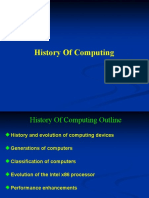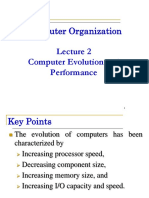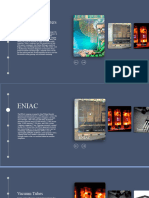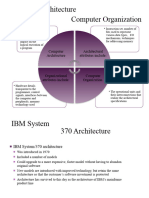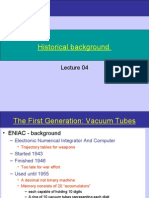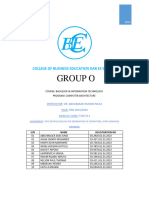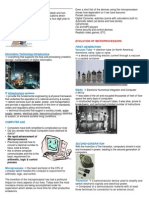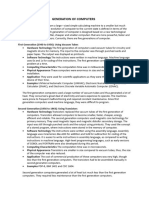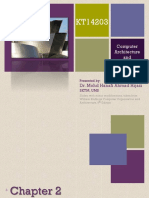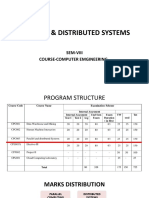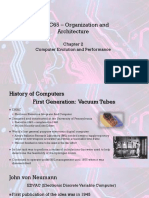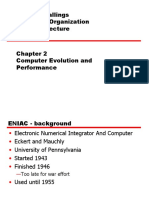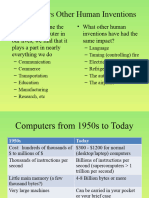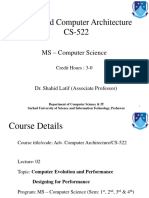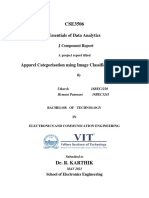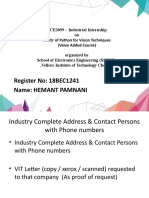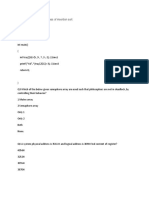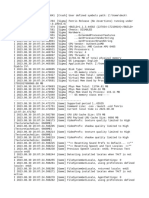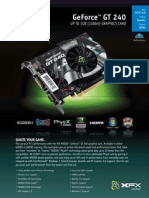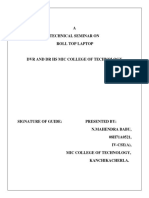0% found this document useful (0 votes)
73 views10 pagesGeneration of Computers
The document discusses the evolution of computers over five generations from the 1940s to present. The first generation used vacuum tubes and were large, power-hungry machines. The second generation introduced transistors, making computers smaller, cheaper, and more efficient. The third generation saw the development of integrated circuits which placed many transistors on a single chip. The fourth generation brought microprocessors which placed an entire computing system on a chip. The fifth generation focuses on artificial intelligence using parallel processing and ultra-large scale integration. Moore's Law observes that the number of transistors on integrated circuits doubles every 18-24 months, driving rapid computer advancement.
Uploaded by
WINORLOSECopyright
© © All Rights Reserved
We take content rights seriously. If you suspect this is your content, claim it here.
Available Formats
Download as PDF, TXT or read online on Scribd
0% found this document useful (0 votes)
73 views10 pagesGeneration of Computers
The document discusses the evolution of computers over five generations from the 1940s to present. The first generation used vacuum tubes and were large, power-hungry machines. The second generation introduced transistors, making computers smaller, cheaper, and more efficient. The third generation saw the development of integrated circuits which placed many transistors on a single chip. The fourth generation brought microprocessors which placed an entire computing system on a chip. The fifth generation focuses on artificial intelligence using parallel processing and ultra-large scale integration. Moore's Law observes that the number of transistors on integrated circuits doubles every 18-24 months, driving rapid computer advancement.
Uploaded by
WINORLOSECopyright
© © All Rights Reserved
We take content rights seriously. If you suspect this is your content, claim it here.
Available Formats
Download as PDF, TXT or read online on Scribd
/ 10







